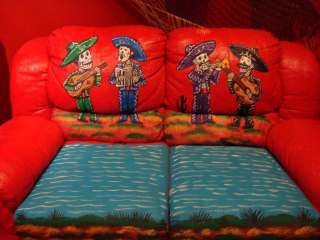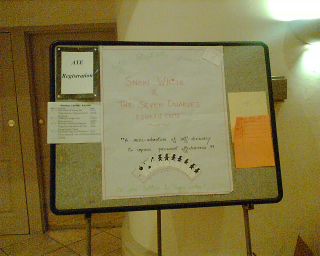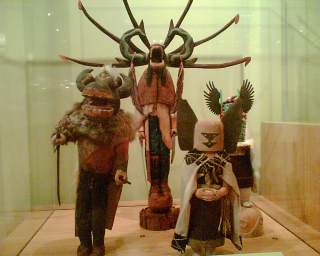‘SimBlogging‘ offers a his and hers viewpoint where Pascal and Portia timebox-blog as a pair on the same topics simultaneously
What Went Well
I finally got to see Heathrow Terminal 5, where I met up with Portia. We got an upgrade on our ticket thanks to the friendly British Airways lady at the checkin desk. A good start.
10 hours later, in Phoenix, the heat, sun, blue skies, pools, palm trees and cacti are a bit of a shock after grey, dreary and wet Brussels and London.
Our “Mirror Mirror on the Wall… Why Me?” Agile Fairytale BOF was met with enthusiasm and we kept playing the game during dinner and drinks, resulting in plenty of “Aha! moments”.
We played the “Quality vs Speed” game that looks at the tradeoff between releasing early and finding/fixing bugs. We managed to win thanks to our clear, simple and adaptive process built upon our shared team principles of “Quality AND Speed”. We might have done better if we had collaborated with the other teams, but at least we shared our process with the others. During the retrospective we discussed if the model of the game is still relevant to Agile projects. When we work with short timeboxes and give priority to DONE stories (without known bugs), the main tradeoff is one of time vs scope. And then we can apply the Business Value principles, which is another game altogether.
Several other sessions provided new learning or illustrated material I already knew:
- Experiencing the coping stances and congruence by sculpting the stances.
- Selling ideas to management (or anyone else for that matter) where we experimented with different techniques to sell ideas to a manager. I got to play the manager, which is always fun. I tried to be helpful and sympathetic to the person who came to me with their idea, but I failed to help the “seller”. Clearly, management is not as easy as it sounds.
- In the “Just Enough Leadership” session we got to experiment with the “wisdom of the crowds” to see if a team came up with better rankings. The session included collected metrics, including one measure of correlation between individual and team scores that might indicate who led the team. We didn’t go very deep into the metrics, but correlation does not mean causation. In our team, we switched leader very quickly. We led by example: someone said “Lets…” and the others followed. If you have a good idea, there isn’t any need for endless debate to come to a consensus. Go for it and see if you’re followed, because a leader is defined by their followship.
Although “I’m an Introvert”, I enjoyed the many discussions and talks with photographers, magicians, testers, jokers, would-be Evil Queens, managers, bloggers, stars and coaches from many countries that make up the audience of the AYE conference.
We ended our travels in Phoenix with a visit to the Heard Native American museum, where we learned more about the Inuit and Pueblo people with their “Katsina” and scary ogres.
Complaints with recommendations
The AYE “conference“, is a 5 day training course with 5 trainers. Either make it a conference with a set of diverse presenters who bring different perspectives or call it training.
The conference kicks off with the warmup tutorial (also known as the “Steve and Don show”) which explains the basic tools and terminology and MBTI types. Many participants wrote their MBTI type on their nametags. Is this a way to advertise “this is how I am and want to be treated”? The emphasis on MBTI types throughout the conference is a bit too strong for my taste. I see MBTI types as preferences, not something “that I am” and that can’t be changed. I would recommend:
- ensuring that there is a clear disclaimer about MBTI, that these are preferences, that this is a default that we will fall back on when we are stressed. Our MBTI type is not a fixed pattern that determines how we work and act.
- working with mixed teams, instead of by MBTI type, so that we can be more effective by exploiting the diversity of the team, one of the lessons of the “Mirror Mirror on the Wall… Why Me?” Agile Fairytale.



[…] ‘Simblogging‘ offers a his and hers viewpoint as Pascal and Portia timebox-blog simultaneously […]
Pascal, it was great to meet you and Portia at AYE 2008. Thanks for sharing your Snow White game.
I was not at this year’s tutorial, but in the four years I’ve been attending AYE (including the tutorial the first year), all of the hosts have made it abundantly clear that type is merely preference. As Jerry Weinberg says, and others quote, “Type is not destiny.” You’re quite right in your comments above, but I’m surprised that you came away thinking the hosts thought differently.
As for displaying your MBTI type on your name tag, that bothered me at first, too. But after my first day four years ago, I found it very helpful for trying to put some flesh onto the model. Not only does it allow me to consider peoples’ behavior in light of their type, but it demonstrates the wide variety of behavior that a single type may exhibit. Truly this is a demonstration of the principle you mention, that type is merely a preference.
Ironically, I had a similar qualm about your Snow White game. While I enjoyed the exercise, I found it unsettling to be asked to assign dwarves to job roles based on a few bullet points about their personality. This seemed quite similar, to me, to the practice of assigning jobs based on MBTI type. I certainly advise against this practice and feel confident that the AYE hosts do also. I’ve had conversations with some of them about this.
Please pardon the length of this comment. I hope that our paths cross again soon.
George,
the Mirror Mirror team game indeed uses the “two-dimensional” fairytale characters to form a project team. The goal of the exercise was less to focus on mapping characteristics to jobs than to find the strengths in each character.
After the first round, the dwarves should have a bit more ‘flesh’, as people have mapped dwarves onto people they know.
We know that both exercises are easy to misunderstand and misuse. We need to be careful during the session that both exercises are used in a positive way.
As both my post and your comment show, participants in a session don’t always receive the message that the session organiser intends 🙂